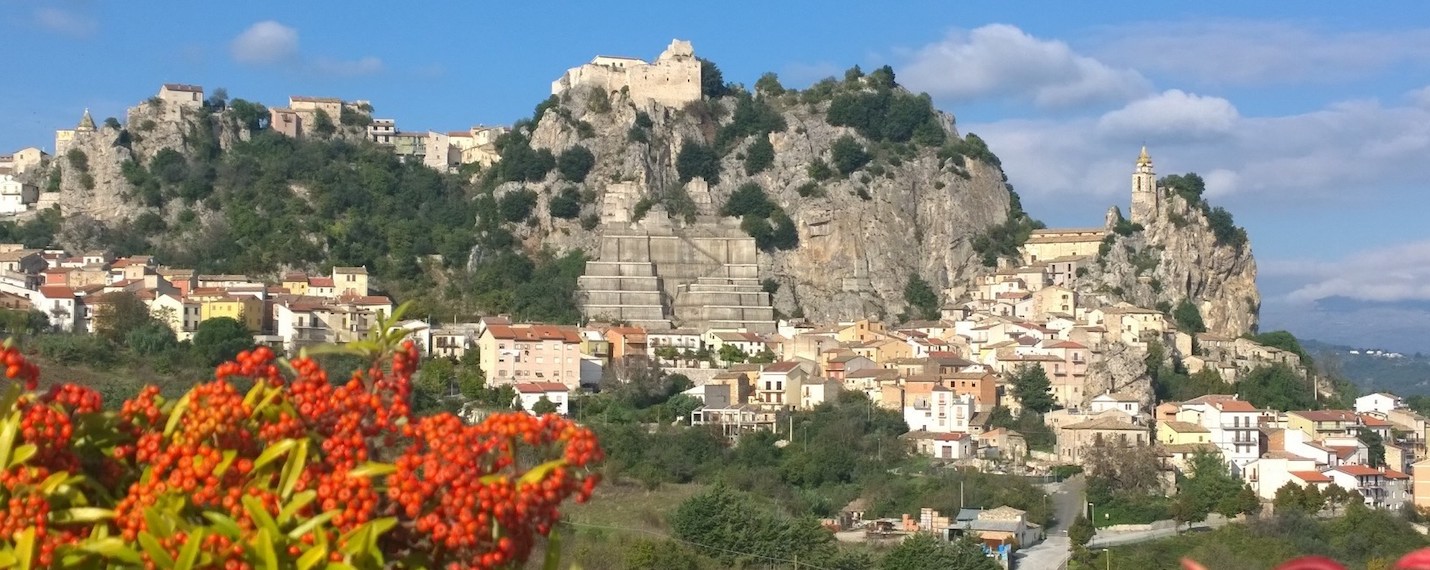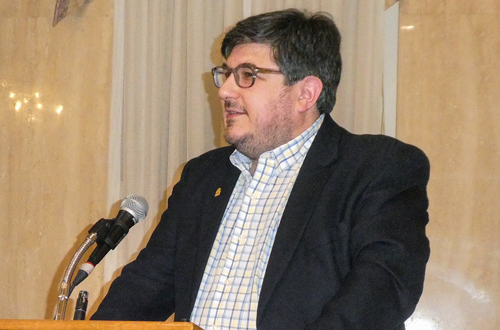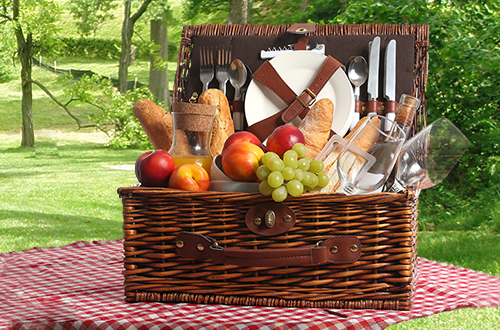
Bagnoli del Trigno

By Nancy DeSanti

Credit: e-borghi.com
Province of Isernia, Region of Molise
The small town of Bagnoli del Trigno is located in the province of Isernia about 25 kilometers northwest of Campobasso and about 20 kilometers northeast of Isernia. It has approximately 708 inhabitants, known as Bagnolesi.
Against the splendid scenery of the Trigno Valley, made up of mountains, forests, coves, and tiny hamlets, this small town has been called “the Pearl of Molise.” The town winds around a steep rock on which an ancient castle rises.
Built around a huge rock dominating the Vella River, the enormous Borrello fortress still rises, although badly damaged over the centuries. The town is located close to a rocky massif that stands out between the Trigno river and the Vella torrent. It is divided into two areas, “Terra di sotto” and “Terra di sopra.” Bagnoli del Trigno is called “La Preta” and is one of the most picturesque towns in Molise, to deserving of the nickname “Pearl of Molise.”
The origins of Bagnoli del Trigno are unknown but historians think Bagnoli was founded by a duke who enjoyed the waters of the Trigno, and eventually an urban center was constructed around a thermal source. At one time, some tribes probably found shelter there from the barbarian invasions.
The first historical records date back to the Middle Ages, when the area was part of the Contado of Molise. Subsequently, the area was ruled by French and Spanish lords, then became part of the Kingdom of Naples and eventually part of the Kingdom of Italy.
In the 20th century, the area saw a sharp drop in population because of emigration, especially to Rome where many Bagnolesi work as taxi drivers.
Among the places worth seeing are the Church of San Silvestro, the Castle of San Felice, and the Pandetta of Sprondasino.
The main activities of the town are agriculture and pastoralism, but in recent years there has been an interest in other types of activities such as those in the building industry, the water industry, and crafts with the machining of stones.
What to See
- Church of San Silvestro, built partly in the rock, with stone steps leading up to the peculiar belltower.
- Borrello castle
- The “casa romana,” a beautiful medieval mansion in the heart of the historical center.
Important Dates
- August 20 — Feast of St. Vitalus of Rome, the patron saint
- December 25 — Procession with “n’docce” (torches) that accompanies the statues of Mary and Joseph.
Italiano

Tradotto da Ennio Di Tullio
Provincia di Isernia, Regione Molise
Il piccolo comune di Bagnoli del Trigno si trova in provincia di Isernia a circa 25 chilometri a nord-ovest di Campobasso e circa 20 chilometri a nord-est di Isernia. Conta circa 708 abitanti, detti Bagnolesi.
Nello splendido scenario della Valle del Trigno, fatto di monti, boschi, calette, e minuscoli borghi, questo piccolo comune è stato definito “la Perla del Molise”. Il paese si snoda attorno ad una rupe scoscesa su cui sorge un antico castello.
Costruita attorno a un’enorme roccia che domina il fiume Vella, sorge ancora l’enorme fortezza del Borrello, anche se gravemente danneggiata nel corso dei secoli. Il paese è situato a ridosso di un massiccio roccioso che si staglia tra il fiume Trigno e il torrente Vella. E’ diviso in due zone, “Terra di sotto” e “Terra di sopra”. Bagnoli del Trigno è detta “La Preta” ed è uno dei paesi più pittoreschi del Molise, tanto da meritare l’appellativo di “Perla del Molise”.
Le origini di Bagnoli del Trigno sono sconosciute ma gli storici ritengono che Bagnoli sia stata fondata da un duca che godeva delle acque del Trigno, ed eventualmente sia stato costruito un centro urbano intorno ad una fonte termale. Un tempo vi trovarono probabilmente riparo alcune tribù dalle invasioni barbariche.
Le prime notizie storiche risalgono al Medioevo, quando la zona faceva parte del Contado del Molise. Successivamente la zona fu governata da signori francesi e spagnoli, poi entrò a far parte del Regno di Napoli ed infine del Regno d’Italia.
Nel 20° secolo la zona ha visto un forte calo demografico a causa dell’emigrazione, soprattutto verso Roma dove molti bagnolesi lavorano come tassisti.
Tra i luoghi da vedere la Chiesa di San Silvestro, il Castello di San Felice, e la Pandetta di Sprondasino.
Le attività principali del paese sono l’agricoltura e la pastorizia, ma negli ultimi anni si è interessato ad altri tipi di attività come quelle dell’edilizia, dell’industria dell’acqua, e dell’artigianato con la lavorazione della pietra.
Le attrazioni del luogo:
- Chiesa di San Silvestro, costruita in parte nella roccia, con gradini in pietra che portano al caratteristico campanile.
- Castello Borrello
- La “casa romana”, un bellissimo palazzo medievale nel cuore del centro storico.
Date da ricordare:
- 20 agosto — Festa di San Vitalo di Roma, patrono
- 25 dicembre — Processione con “n’docce” (fiaccole) che accompagnano le statue di Maria e Giuseppe.
July/August 2023





